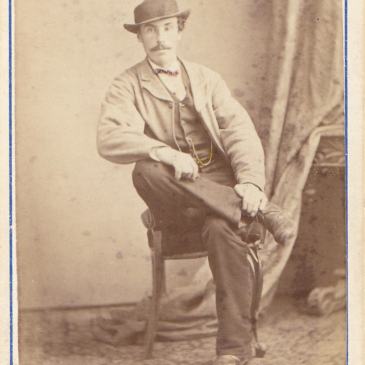Too often the 300 or so extant 19th century photographs of Tasmanian prisoners taken by commercial and police photographer Thomas J. Nevin in the decade 1870-1880 are circulated within academic discourse as realistic representations of “Port Arthur convicts”, the term used in public library and museum catalogues, and by historians who fail to interrogate the term as a systemic cultural belief about Tasmania. But the vast majority of these photographs show men in their forties, fifties and sixties, not the youths they were when they were transported and incarcerated at Port Arthur prior to July 1853, the date when transportation ceased to the penal colony. So these photographs cannot function as images in any synedochal sense either within discourse about an historic era of “transportation”, or of “Port Arthur” as its contextual genesis and genius loci.
Commercial photographer T.J. Nevin took these photographs as mugshots of men, recidivists who had offended locally and repeatedly, for the Municipal Police and Gaol authorities in Hobart between 1872 and 1880. By 1900, the 1870s mugshots had been removed from the original registers by the government photographer and commercial entrepreneur of convictaria, John Watt Beattie. The photographs initially had been arranged by the prisoner’s discharge date, a common administrative practice which survived into the 1930s. However, the 1870s discharge registers have not survived intact. Late registers do survive, in which the prisoner’s mugshot is accompanied by his criminal record and discharge notice. These are now held at the Tasmanian Archives and Heritage Office (Ref: POL708).
… More How to read the records: prisoner Peter MOONEY










































You must be logged in to post a comment.